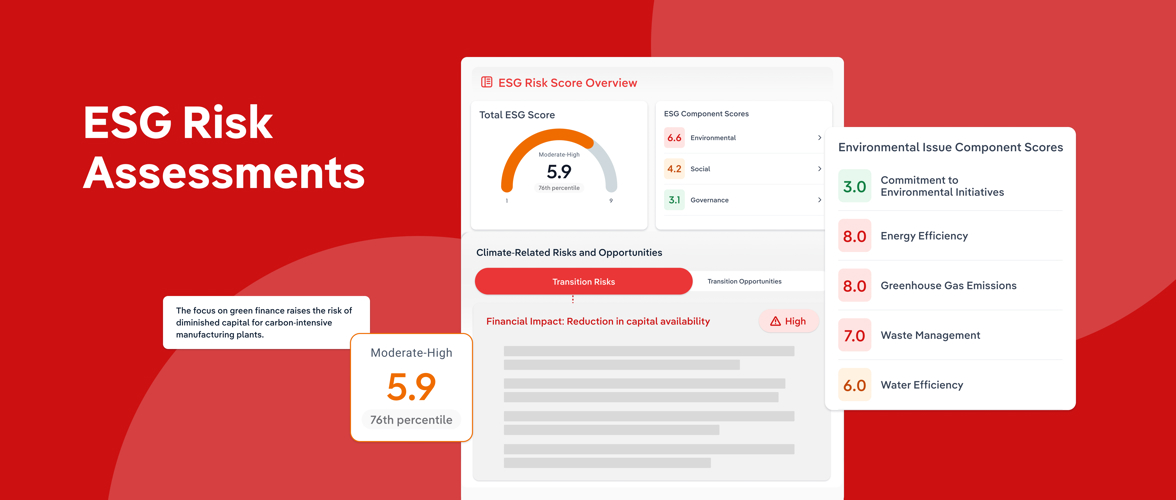Understanding how industries interact and evolve is crucial for banks to stay one step ahead of credit portfolio risks. In a recent conversation, Matthew Hils, Director of Portfolio Management and Reporting at Fifth Third Bank, shared insights into how his team leverages IBISWorld’s tools to take their risk analysis and strategic planning to the next level.
A culture of proactive risk management
At Fifth Third Bank, Hils and his team pride themselves on being proactive. Rather than waiting for economic shifts to become urgent issues, they compile and analyze data well in advance.
“We want to make sure that there’s transparency for leadership before it’s necessarily needed.” - Matthew Hils, Director of Portfolio Management and Reporting.
By creating an environment where data is continuously scrutinized, distributed, and discussed, the bank ensures critical information is available when the decision-making stakes are high.
This proactive mindset drives their focus on industry concentrations and second- or third-order effects—where an economic shift that directly affects one line of business can quickly impact many others. As Hils notes, a portfolio might be exposed to overlapping risk factors, especially when industries share components of their supply chains or have similar macroeconomic sensitivities.
The power of third-party data
Although Fifth Third Bank has developed a robust internal dataset and reporting framework, the addition of IBISWorld’s industry intelligence has proven to be a game-changer. Hils says this third-party partnership “allowed us to take our analysis to the next level,” giving his team a broader perspective on industry risk metrics, volatility scores, and sector-by-sector financial outlooks.
One of the major benefits of IBISWorld’s data is flexibility—it can support both standardized, business-as-usual reporting and ad hoc “deep dives” into emerging issues. For instance, volatility metrics help the bank look beyond present conditions, anticipating how “calm waters today might become rough and rocky tomorrow.” This level of insight means that credit managers can quickly identify hotspots and communicate them effectively to leadership.
Diving deeper: Connecting the supply chain dots
A standout feature of IBISWorld’s offering is its supply chain data, which shows how specific industries and sub-sectors connect. This has enabled Fifth Third to see beyond simple industry categorizations. As an example, Hils recalls how lockdowns during the COVID-19 pandemic severely impacted foot traffic-dependent businesses, such as hotels. However, the ripple effect extended to suppliers who sold products and services to these businesses. By mapping these “second-order” risks, the bank created richer—and more accurate—portfolio risk analyses.
Because IBISWorld’s platform is tied to the same regulatory-endorsed NAICS taxonomy that Fifth Third already employs, connecting the data was straightforward and efficient.
“We were able to link hotels with industries selling into the hotel space with relative ease.” - Matthew Hils, Director of Portfolio Management and Reporting.
This level of integration meant Fifth Third’s analysis on COVID-related impacts was not only detailed, but delivered quickly—crucial at a time when decisions needed to be made on tight timelines.
Looking ahead: Regional insights & expanded access
Hils and his team are continually exploring new ways to use IBISWorld’s data—particularly at the state and local levels. Given Fifth Third’s strong focus on regional banking, understanding how an industry’s outlook changes state by state or city by city provides valuable nuance. From small businesses to middle-market companies, localized economic forces can significantly influence performance, making state-specific data an increasingly vital asset.
Meanwhile, Fifth Third is also looking into enhanced distribution channels for IBISWorld’s insights. By integrating those insights into internal dashboards, credit and sales professionals across the bank can pull timely, relevant data for their specific portfolios.
“We want it to be easily digestible, easy to refer to, and actionable.” - Matthew Hils, Director of Portfolio Management and Reporting.
The goal is to make advanced industry analysis readily accessible to every decision-maker, from portfolio managers to frontline relationship teams.
Final Word
Fifth Third Bank’s success story underscores the value of combining strong internal data with authoritative third-party intelligence. Through IBISWorld’s tools—spanning industry risk metrics, volatility measures, supply chain analysis, and local-level insights—Hils and his team continue to build a more holistic, forward-thinking approach to portfolio risk management.
By drilling down into potential risks before they escalate, sharing information transparently across the organization, and drawing on comprehensive datasets for timely decision support, Fifth Third Bank exemplifies how thoughtful integration of industry intelligence can help financial institutions thrive—even in the face of rapidly changing and uncertain economic conditions.









